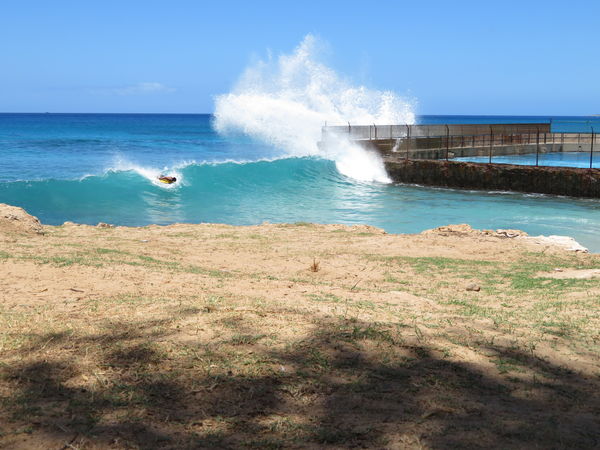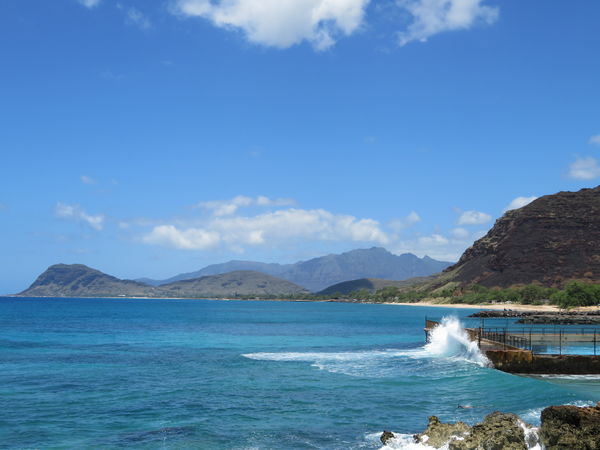Hi,
Like several other responses, I recommend a macro lens in the 90mm, 100mm, 105mm range of focal lengths. This is a good compromise of size, hand "holdability" and working distance from your subjects.
Frankly, a lot of flower & plant photography is done at far less magnification than the 1:1 that most macro lenses are capable of doing. As a result, a more compact lens like a 60mm might be workable, too... it will put you closer to the subject, but if not at full magnification you'd still have ample working distance.
The "cheap" way to "do macro" would be to get some macro extension tubes and use those with your 18-135mm. Those tubes go between the lens and camera, forcing the lens to be able to focus closer. I recommend the Kenko tube set (12mm, 20mm & 36mm)... good quality at a reasonable price. Macro tubes have no optics in them, so they generally don't degrade image quality. The more extension you use, the close the lens will be able to focus.... Corollary to that, the longer your lens' focal length, the more extension you'll need to significantly change it's close focusing ability and increase magnification.
I've got Canon and Kenko macro extension tubes.... always have several with me in case I need them. They are relatively small, lightweight and easy to use with only a little practice. They can even be used with macro lenses, to push them beyond their native level of magnification (usually 1:1 or "life size"... which means on an 80D you can photograph an area the size of the sensor, which is approx. 15x22mm).
Your camera usually is sold in kit with the EF-S 18-135mm IS USM or EF-S 18-135mm IS STM lens... which are pretty darned close focusing for a non-macro lens (those lenses are identical optically... the only difference is their focus drive motor.... the newer and more expensive USM version is faster focusing and better tracking movement). They can do 0.28X magnification... or nearly 1:3 (1/3 life size), on their own.
A "true" macro lens will generally give higher magnification and most of them have extremely high image quality. Macro lenses typically are "flat field designs"... meaning that up close they are sharp from corner to corner and evenly illuminated across the entire image area (a non-macro, non-flat field lens such as your 18-135mm can "go soft" in the corners and have some vignetting when made to focus very close, especially when used with extension tubes to push it beyond it's native close focusing ability).
If you have your heart set on a "true" macro lens, there are a number to choose among.... all capable of making high quality images. It's more those lenses' other features that set them apart from each other. And you generally "get what you pay for". In the focal length range recommended, you can choose among:
- Canon EF 100mm f/2.8L IS USM.... $900... very high build quality and very full featured. One of only two that can optionally be fitted with a tripod mounting ring (which is quite useful for a lot of macro work, Canon Tripod Ring D... $172).
- Tamron SP 90mm f/2.8 VC USD... $650... the latest in a long, series of well respected macro lenses from this manufacturer, quite full featured.
- Canon EF 100mm f/2.8 USM... $600 + $35 lens hood... An older design without image stabilization, but otherwise largely equal to the capability & qualities of the newer design. This is the only other lens in this range that can optionally be fitted with a tripod mounting ring (Canon Tripod Ring B... $150).
- Sigma 105mm f/2.8 OS HSM... $550... top of the line from Sigma, great reputation and quality.
- Rokinon 100mm f/2.8, Samyang 100mm f/2.8... $500, $450... Same lens selling under different names. Both are manual focus only (some macro work is more easily done manual focus). Also manual aperture control.
- Tamron SP 90mm f/2.8... $500... An earlier design of the Tammy, without VC (stabilization) or USD (ultrasonic focus drive) and not IF (internal focusing).
- Tokina AT-X 100mm f/2.8... $350... A very capable, but simpler lens. Not IF, slower micro motor AF, no stabilization, "focus clutch" req'd to shift between AF and MF.
Some more compact, shorter focal length lenses which risk putting you too close to subjects at full 1:1 (but that high magnification may not be necessary for most flower/flora photography):
- Tamron SP 60mm f/2 Di II... $525... One of few macro lenses with large than f/2.8 aperture, which may make it more useful for some other purposes (portraiture, lower light). IF design. Slower micro motor focus drive. Crop sensor only design.
- Canon EF-S 60mm f/2.8 USM... $400 + $27 for lens hood... One of the most compact. Faster ultrasonic focus drive. Crop sensor only design.
Some other possibilities....
- Sigma 70mm f/2.8 "Art"... $569... A recently introduced updated version of a lens they've offered for some time.
- Venus Laowa 60mm f/2.8 2:1... $400... An exceptionally high magnification, manual focus only, manual aperture lens.
Not recommended for first time macro users or only macro lens...
- Canon MP-E 65mm f/2.8... This is an ultra high magnification (up to 5X life size.... and no less than 1:1), manual focus only lens. Due to the ultra high mag, this is pretty much a tripod-only lens and
- Macro lenses 50mm and shorter focal lengths... too close to subject.
- Macro lenses 150mm and longer... More specialized and difficult to hold steady, smaller aperture needed to offset shallower depth of field.
Regarding some of the features mentioned and you should look for on lenses:
All macro lenses with autofocus tend to be slower focusing than non-macro lenses. In part, that's because they have to move their focusing elements a long, long way to go from infinity to 1:1 magnification. But it's also by design... Slower "long throw" focus designs are used to emphasize accuracy, over speed. This is because depth of field becomes quite shallow at high magnifications.
Some macro lenses have features to help a bit with AF speed. Lenses that use ultrasonic focus drive (Canon USM, Sigma HSM, Tamron USD) are faster focusing and possibly quieter focusing than lenses using micro motor focus drive. A "focus limiter" is another feature on many macro lenses, which can help with focus speed. Just as it sounds, this is used to limit the lens to working within a certain range of it distances, there-by helping it work faster. You will find simpler two-stage focus limiters on some lenses, more advanced three-stage on others.
Ultrasonic focus drive lenses also allow "full time manual override".... meaning that you can fine tune focus manually any time you wish. It's not necessary to turn off the AF system first. This is not the case with micro motor focus drive lenses. They must be manually turned off first. Tokina lenses use an unusual way of doing this, which they call their "focus clutch" mechanism. The lens' focus ring slides slightly forward and backward to switch back and forth between AF and MF. When it's set to AF, turning the focus ring won't do anything. To manually focus the lens must be switched to MF setting (this serves to protect the AF system from possible damage).
"Internal focusing" (or "IF") is another feature you will find on some macro lenses... usually the more expensive ones. This means the lens doesn't grow longer when focused closer. Non-IF macro lenses can nearly double in length when focused to their highest magnification, but may be more compact when set to infinity focus. IF lenses start out larger, but don't change in length even at their highest mag. You never notice it when using them, but IF lenses actually change focal length slightly.... for example, at full 1:1 Canon's two 100mm lenses' "true" focal length is closer to 70mm, when measured in a lab.
Most Canon macro lenses are able to directly use Canon macro flash. The EF 100mm f/2.8 USM, EF-S 60mm f/2.8 and MP-E 65mm all have a built-in feature to directly mount the MR-14EX Ring Lite & MT-24EX Twin Lite flashes. There are adapters sold separately to allow the flash to mount to the EF 100mm f/2.8L IS USM and the EF 180mm f/3.5L USM, and it may be possible to similarly adapt a third party lens. There are also alternative mounting methods both for third party and the Canon macro flash.
Both the Canon 100mm macro lenses are unique in that they can optionally be fitted with a very useful tripod mounting ring, at some additional cost. I've cited the cost of the Canon brand ring, which is top quality in both cases... there are cheaper third party tripod rings available (quality unknown, but I'd avoid really cheap plastic ones). In or close to this focal length, no macro lenses from other manufacturers include or can optionally be fitted with tripod rings. Only the two Canon 100s offer this feature.
Two of the above mentioned Canon macro lenses do not come with their matched lens hoods included. I've cited the price to separately purchase the good quality Canon brand hoods, but there are also less expensive third party clones available.
Hi, br br Like several other responses, I recomme... (
show quote)


